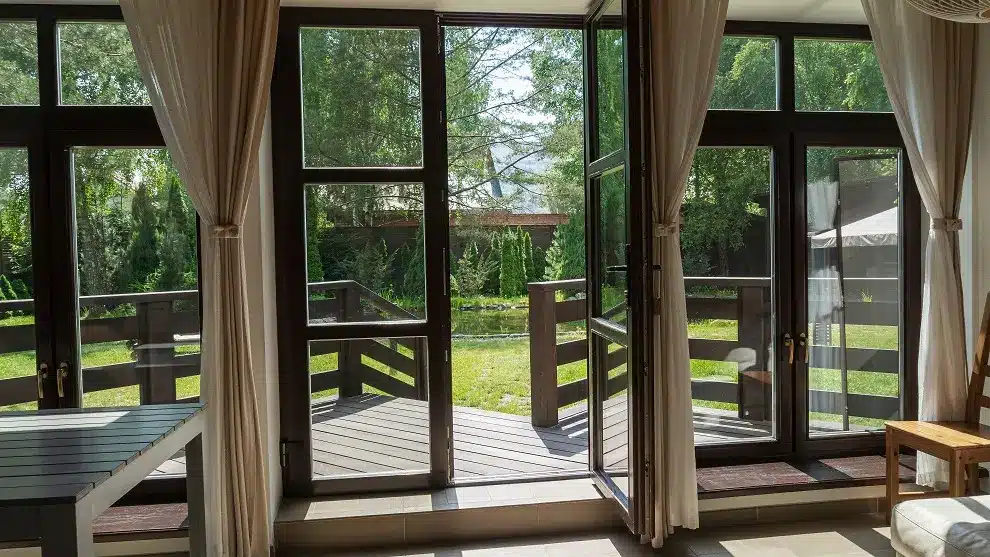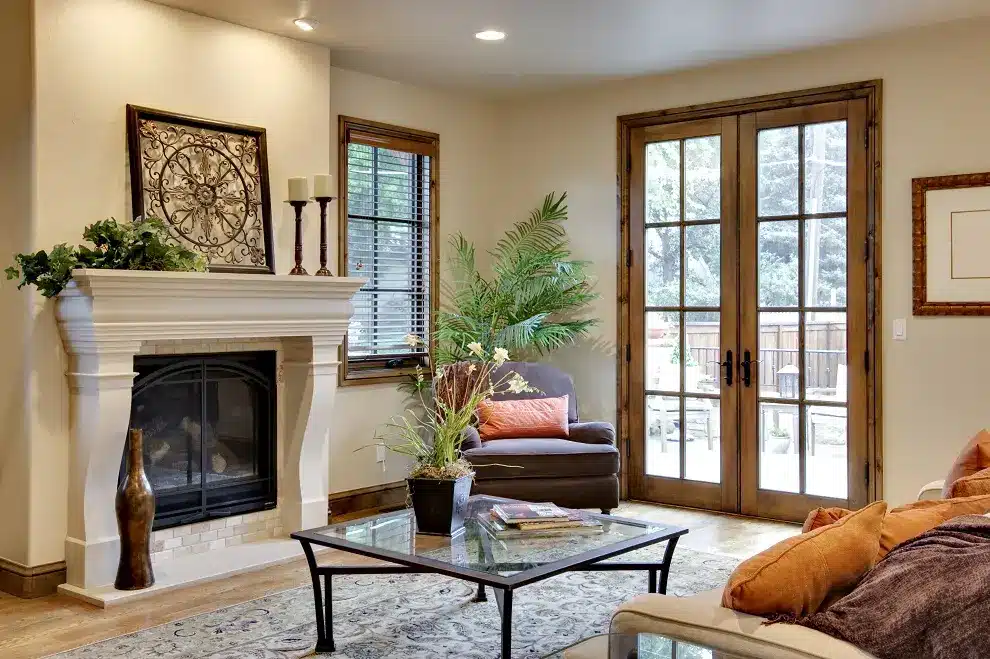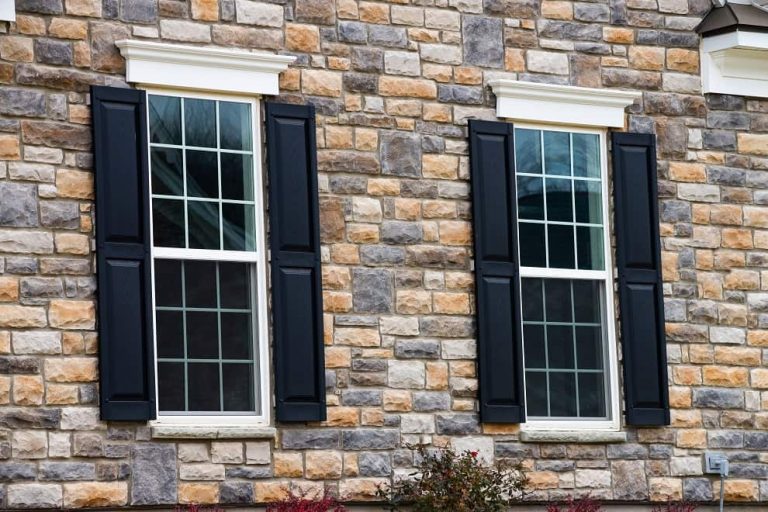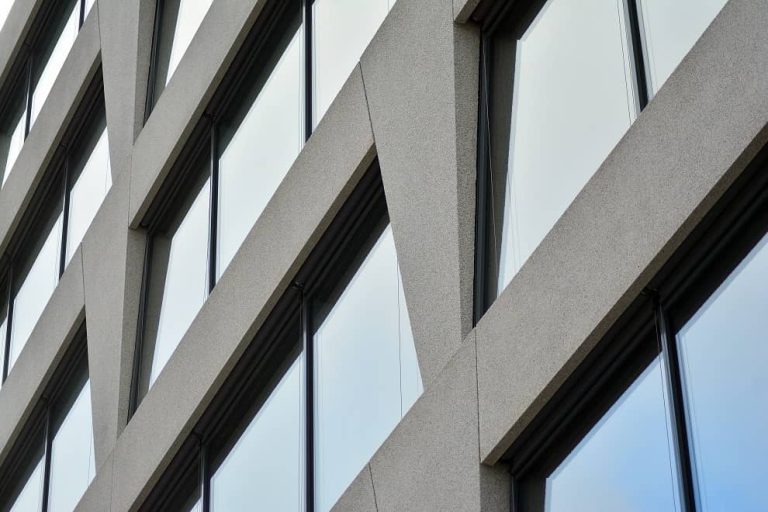French doors, with their dual-pane design and elegance, have become synonymous with style and functionality in homes worldwide. But how do French doors work, especially when it comes to their seamless blend of indoor and outdoor spaces? From French patio doors that offer a panoramic view of your garden, to exterior French doors creating an inviting entrance, their versatility is unmatched. Here’s what our team at Apex Window Werks wants you to understand about French doors.
Origins and History of French Doors
The origins of French doors can be traced back to the Renaissance period in France, a time marked by an artistic and architectural revival. Inspired by Italian design, French craftsmen began incorporating more light into homes which led to the birth of these doors with glass panes extending for most of their length. Naturally, you might ask “Why are they called French doors?”. This name is simply a nod to their place of origin. Over time, they tend to be associated with luxury, elegance, and a blend between indoor and outdoor spaces. From French sliding doors to French patio doors, they’re a sought-after design feature in homes across the world.
Benefits of French Doors

- Elegance and aesthetics: Their sophisticated design adds a touch of classic beauty to any room;
- Natural light: When open, they flood spaces with sunlight and reduce the need for artificial lighting;
- Space illusion: The influx of light and unobstructed view can make rooms appear larger and more inviting;
- Seamless transition: They bridge the gap between indoor and outdoor spaces to create a smooth flow;
- Versatility: Can serve as a stylish alternative to the traditional sliding patio door.
- Energy efficiency: With the right materials and insulation, they can help maintain indoor temperatures;
- Increased property value: Their luxury and functionality can enhance the value and appeal of a property;
- Broad views: They offer wider, uninterrupted views of gardens, patios, or terraces compared to standard doors;
- Customization: They come in various styles, materials, and finishes to match different architectural needs.
Drawbacks of French Doors
- Space requirements: Traditional French doors swing out or in, meaning they need enough indoor space for unhindered operation. This can be limiting compared to sliding patio doors, which don’t need such clearance;
- Higher cost: Premium French doors, especially those tailored with special materials or designs, are often more expensive than other standard door options;
- Privacy limitations: While they offer fantastic views and let in ample light, the extensive glass panels can also mean reduced privacy if not they don’t have the right window treatments.
French Door Types

When you think of French doors, the image that might come to mind is a set of double doors with multiple glass panes that elegantly bridge two spaces. But what do French doors look like in their various forms? Over time, innovation and design evolution has led to several French door options that cater to different architectural and functional needs.
Single-Hinged French Door
Traditionally, a single-hinged French door is made from a door pane with glass sections that allow natural light to stream into a room. This type is often used as exterior doors that lead to gardens or patios, providing the classic French door aesthetic on a smaller scale. These are perfect for spaces that can’t accommodate larger door setups.
Double-Hinged French Door
The most recognizable of the options, double-hinged French patio doors consist of two door panels, both with glass panes. These doors are typically hinged on either side of the door frame and open from the middle to create a wide, welcoming entrance. The symmetrical design is the added advantage as it allows ample natural light and provides unobstructed outside views.
Sliding French Door
Marrying the classic design of French doors with the functionality of sliding doors, sliding French doors are a contemporary option for homes looking to save space. Instead of swinging open like the hinged versions, these doors glide along a track. These French doors tend to be made with materials like fiberglass, offering durability, and better insulation, and require less space. They’re ideal for balconies, patios, and interiors where space is at a premium.
Don’t let your beautiful doors lose their charm. Contact our specialists at Apex Window Werks today for top-notch advice, repairs, and restoration services tailored to your needs. or call us(847) 557-9600
Materials That French Doors Are Usually Made Of
French doors, especially those used as patio doors, serve as a bridge between indoor and outdoor spaces and play a crucial role in energy efficiency. The material used in constructing a French patio door determines its insulation properties, durability, and overall contribution to energy savings.
Wood French Doors

Wood has been a traditional choice for French doors for centuries, mainly due to its natural insulating properties. Wood provides a barrier against the cold and heat, making wooden French patio doors a popular choice in both temperate and colder regions. Despite this, wood requires regular maintenance to prevent warping, rotting, or deterioration, especially when extreme weather conditions are involved.
Fiberglass French Doors
Fiberglass continues to gain popularity as a material for French patio doors due to its durability and superior insulating qualities. Mimicking the aesthetic appeal of wood but without the associated maintenance, fiberglass French doors resist warping, swelling, and rotting. These doors have foam-filled cores that offer enhanced thermal insulation. This significantly reduces heat transfer.
Vinyl French Doors
Vinyl is another energy-efficient material that offers excellent thermal insulation. It’s a material that doesn’t readily conduct heat, helping interiors stay warm in the winter and cool during the summer. Plus, vinyl French doors are resistant to fading, chipping, and rotting. This allows homeowners to enjoy a low-maintenance and durable option.
French Door Styles

There’s a reason that the elegance and charm of French doors have transcended centuries. They always evolve in design but are rooted in architectural tradition and aesthetic beauty.
Traditional French Patio Doors
Traditional French patio doors are often linked with the aesthetic of classic European homes. There’s an air of old-world charm and luxury about them. At their core, these doors are predominantly made from wood, lending a warmth and authenticity that’s difficult to replicate. However, while wood forms the backbone of this door style, modern homeowners aren’t afraid to add their touch of customization. Traditional French doors can be personalized with countless hardware choices that range from ornate handles to minimalist knobs. Moreover, homeowners can collect grille profiles to match their ideal aesthetic, whether it’s a quaint cottage or a grand manor. For even more customization, there’s a palette of traditional colors to choose from. Ultimately, no two doors are the same and each will fit the architectural design and the homeowner’s vision.
Modern French Patio Doors
In contrast, modern French patio doors integrate contemporary design elements that blend the classic French door style with modern requirements. One of the most notable incorporations is the adaptation of sliding doors; these are space-saving solutions that don’t compromise aesthetic appeal. Sleeker frames, larger glass panels, and minimalist designs characterize these doors. They’re ideal for homeowners looking for a more current and streamlined appearance while still cherishing the foundational elements of traditional French doors.
Maintenance and Care of French Doors

Taking care of your doors enhances their appearance and extends their lifespan. With a little extra care, you can ensure they remain a cherished feature of your home for years to come.
Here’s a guide to maintaining your french patio door:
- Regular cleaning: Wipe down the glass panes with a mild detergent and water solution. For wooden frames, use a damp cloth to remove dust and dirt. Any cleaning agents you use should be appropriate for the door’s material;
- Inspect for damage: Periodically check for any signs of wear, such as chipping paint, cracks in the glass, or warping of the wood. Address minor issues promptly to prevent larger problems down the line;
- Sealing and insulation: Especially for exterior French patio doors, ensure that seals remain intact to prevent drafts and moisture infiltration. Re-caulk or replace weather stripping as needed;
- Lubricate hinges: To keep the doors opening and closing smoothly, periodically lubricate the hinges and any other moving parts;
- Protection from elements: If exposed to direct sunlight, consider using UV protective films or shades to prevent fading. Use sealants or paints on wooden doors that offer protection from harsh weather conditions;
- Adjust hardware: Over time, door handles, locks, and other hardware could become loose. Regularly inspect and tighten them to ensure security and functionality.
French Patio Doors: The Bottom Line

Understanding “what is a French door” underscores its practicality in contemporary residences. These doors are the perfect combination of aesthetic charm, functionality, and adaptability. However, as with all home features, they require consistent care and attention.
If your French doors are no longer working like they used to or you simply want to restore their original luster, professional assistance is a call away. Apex Window Werks, a reputed French Door Repair company, is on standby to restore, repair, and provide guidance on all facets of French door concerns. We proudly serve the regions of Illinois, Wisconsin, and Minneapolis. Reach out to us today and ensure your French doors remain an emblem of elegance and functionality in your home.
FAQs
Can French doors open out?
How much are the new French doors?
Get a free estimate
Hire the window repair company you can trust.





